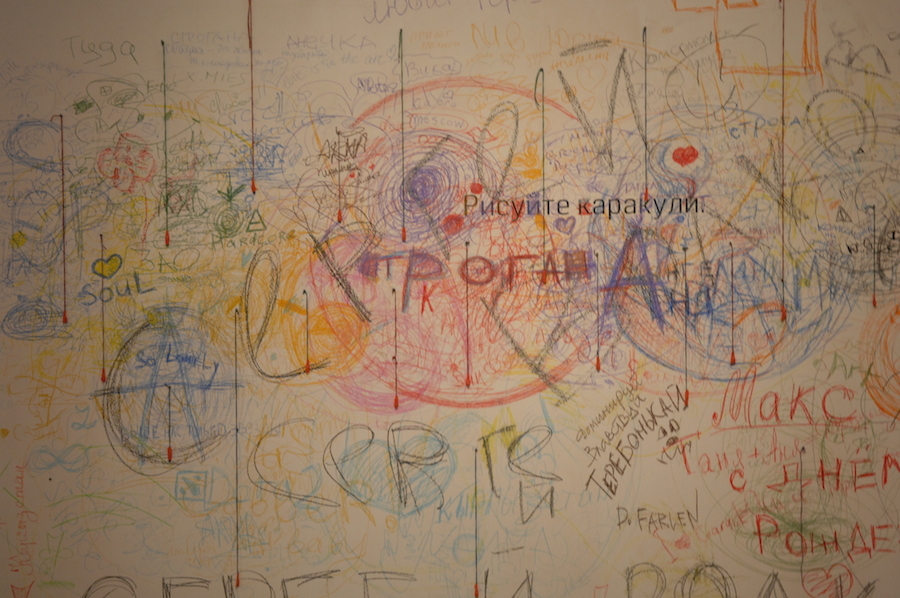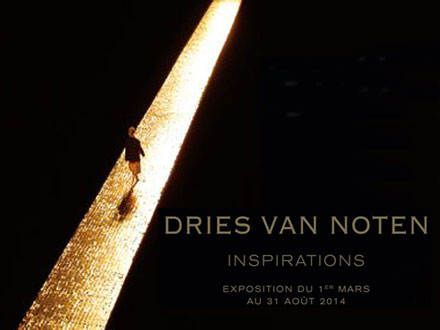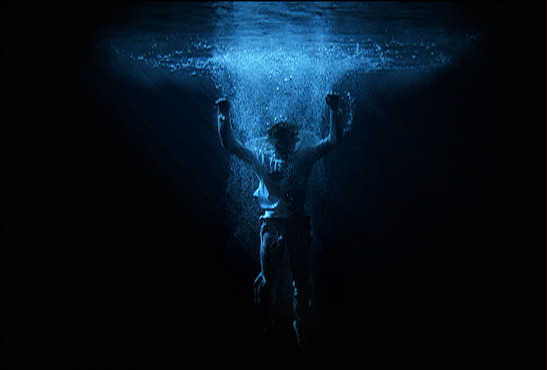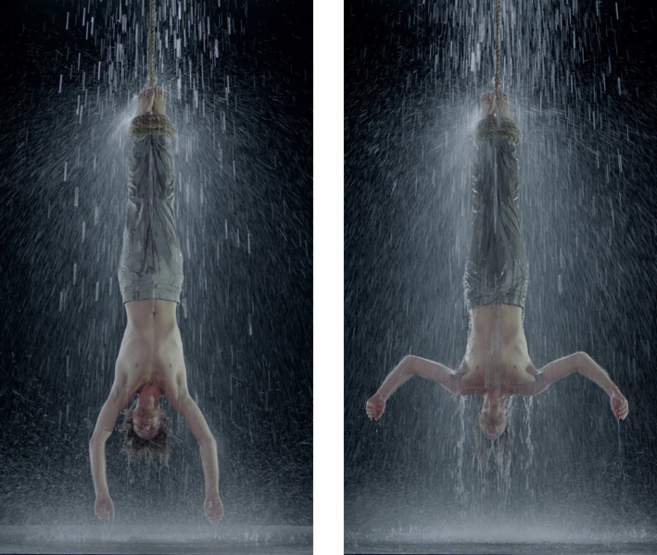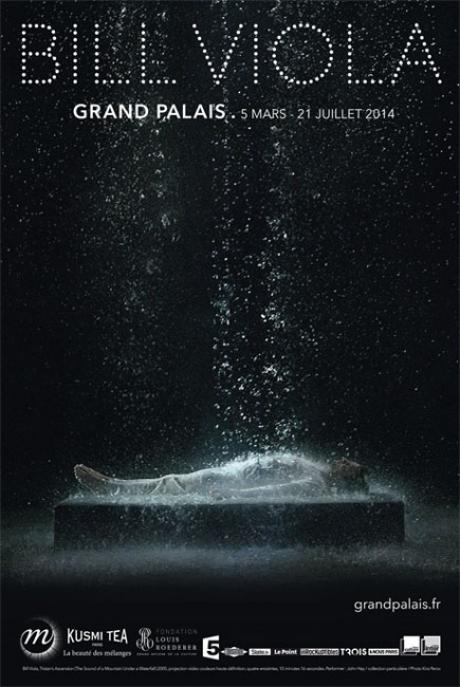- Details
- Written by Alejandra de Argos
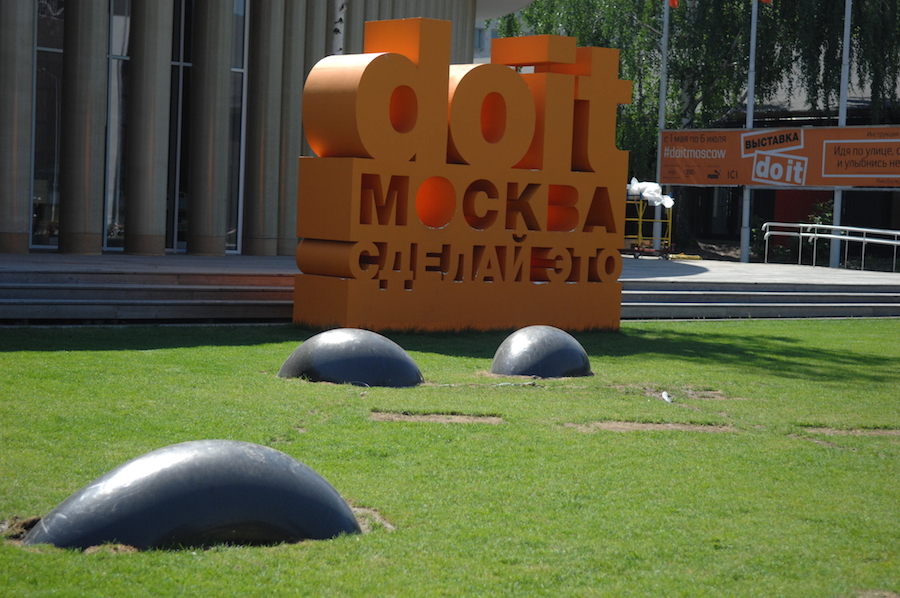
The Garage Center for Contemporary Culture is a non-profit organization opened in 2008 by collector Dasha Zhukova in what was once a bus station.
On May 1st this year, the center changed its name to The Garage Museum of Contemporary Art and relocated to Gorky Park, with the aim of becoming an international point of reference in contemporary art. “Do It Moscow” is the center’s first exhibition since the move.
In this exhibition, the museum becomes an interactive space: a total of 80 artists from all over the world have provided the initial concept for their work together with instructions for use, and hundreds of local visitors have come to the center to see the exhibition and “follow” the instructions. Visitors thus play an active role in the exhibition, as participants as well as spectators, and the center’s staff is on hand to explain how each installation works and what the instructions are. There were many groups of art students visiting the exhibition when I was there, and the experience as a whole was enjoyable and enriching for its singularity.
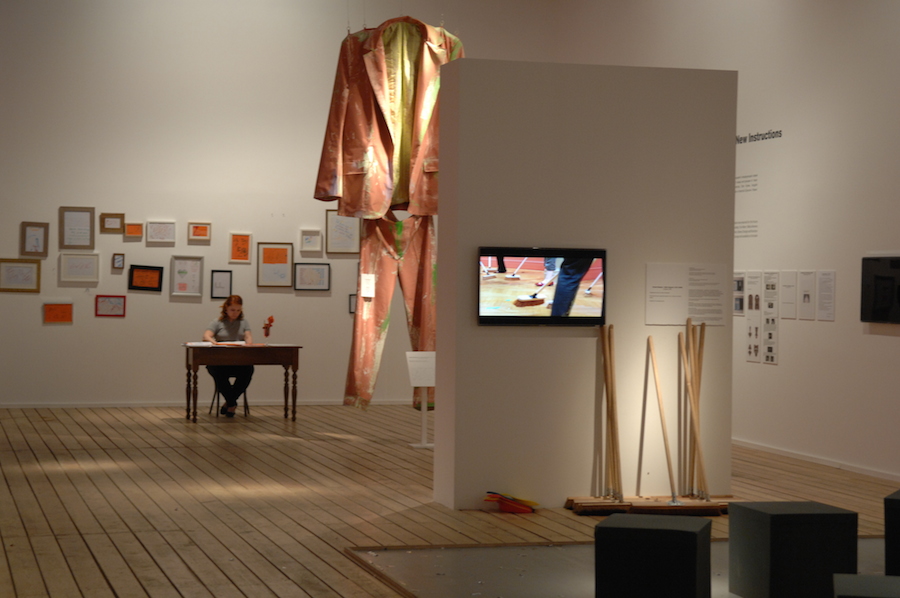
The initiative, which began in January 2014, sees various centers and museums, as well as local students and artists, taking part. Thousands of visitors also help bring the initiative alive through their many interpretations of the individual art works.
The first installation one is greeted with is a messy bedroom where t-shirts, pillows, underwear and boots are all strewn across the floor, as if something dramatic had just happened. The artist John Chamberlain dictated the instructions and Lawrence Weiner interpreted them. The role of the spectator was to change the course of the events being represented by physically changing the composition.
Another installation consisted of colourful knitted structures, reflecting architect Sejima Kazuyo’s idea of building architecture for dogs. In the meantime, a Moscow Art Lyceum student was taking photos of the installation according to instructions by Christian Boltanski. The supervisor of this specific installation also played a part, insisting that the dogs wear muzzles for safety reasons.
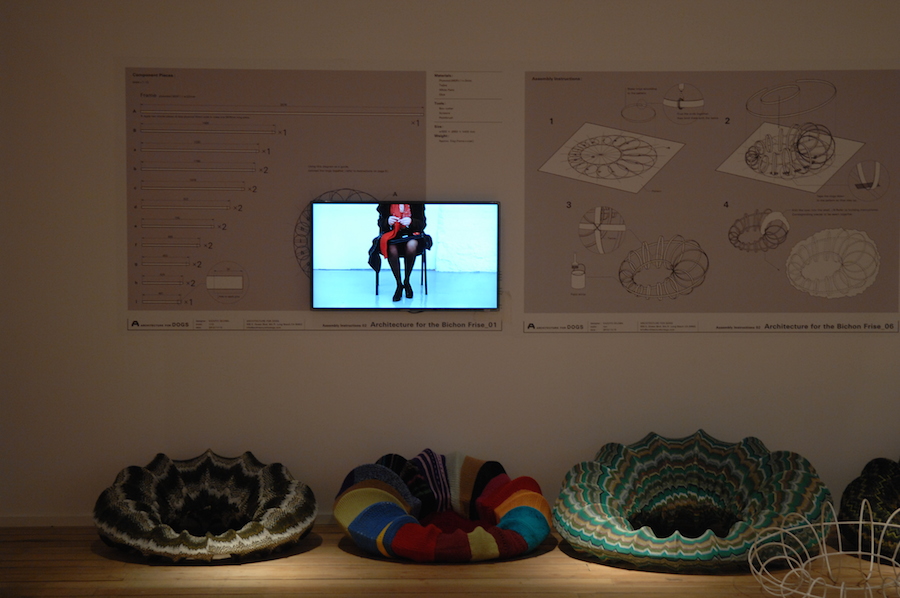
Chinese artist Cao Fei had set up a soapbox where participants could stand up and take on the role of newly appointed presidents of their nation — they were thus invited to give a 20-minute presidential speech and have it recorded in the process.
Erwin Wurms’ offering was an invitation to the public to insert their legs through the sleeves of a sweater and to assume a statue position for 20 seconds.
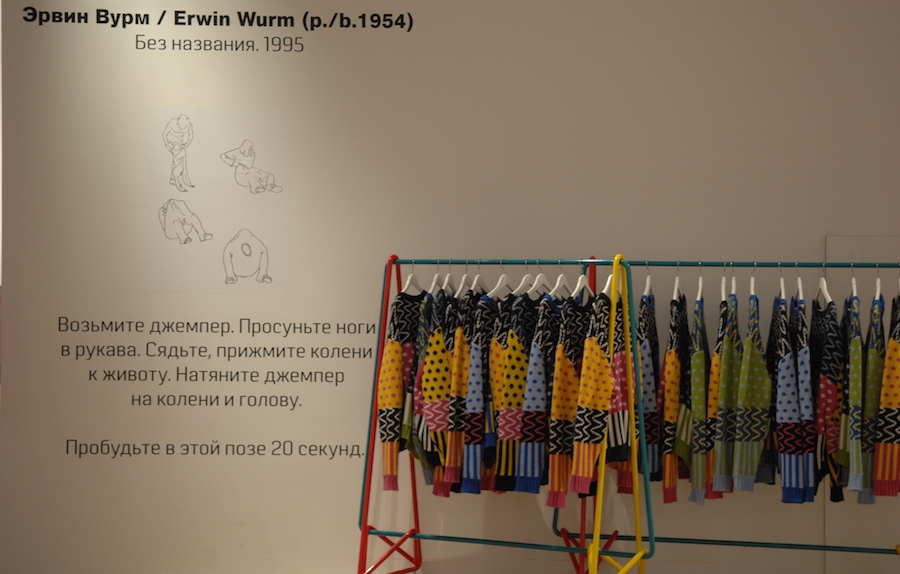
Another surprising piece was by controversial Guatemalan artist Aníbal López, who had placed a sign which read “For Rent” next to a series of his own paintings, the idea being that for $20 visitors could rent one of his paintings for a day, with the revenue going towards the production of future works by other artists.
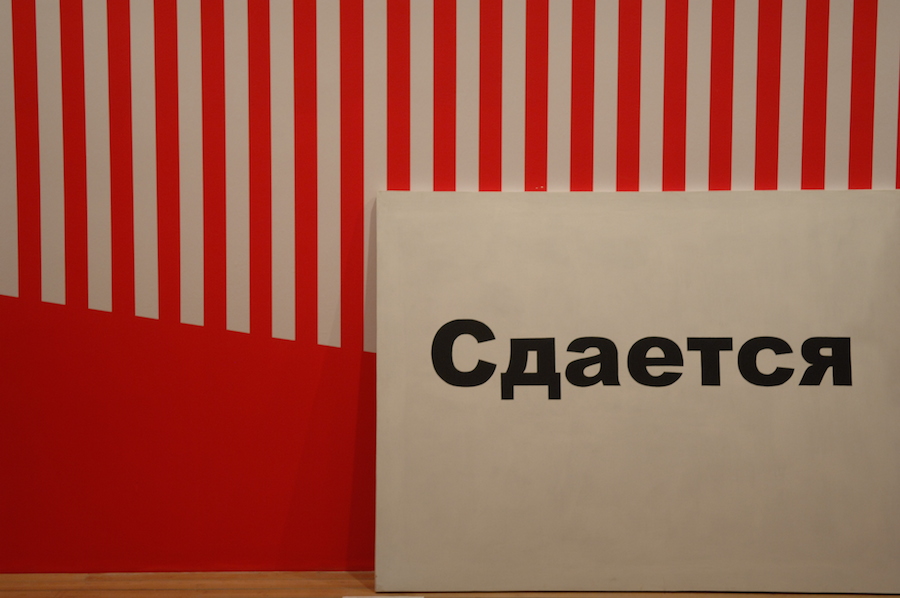
There was great variety to be seen among the installations: a standalone wall by Carlos Cruz Diez, a corner with a mountain of sweets by Félix Gónzalez-Torres, shelves painted by children with the covers of books they’d like to read, paintings by art students from Moscow’s British School of Design, scribbles… The initial idea for the exhibition came from Greek-born artist and architect Andreas Angelidakis, who has shown a real commitment to involving the audience directly in the art installation, which will in fact be destroyed when this temporary exhibition comes to a close.
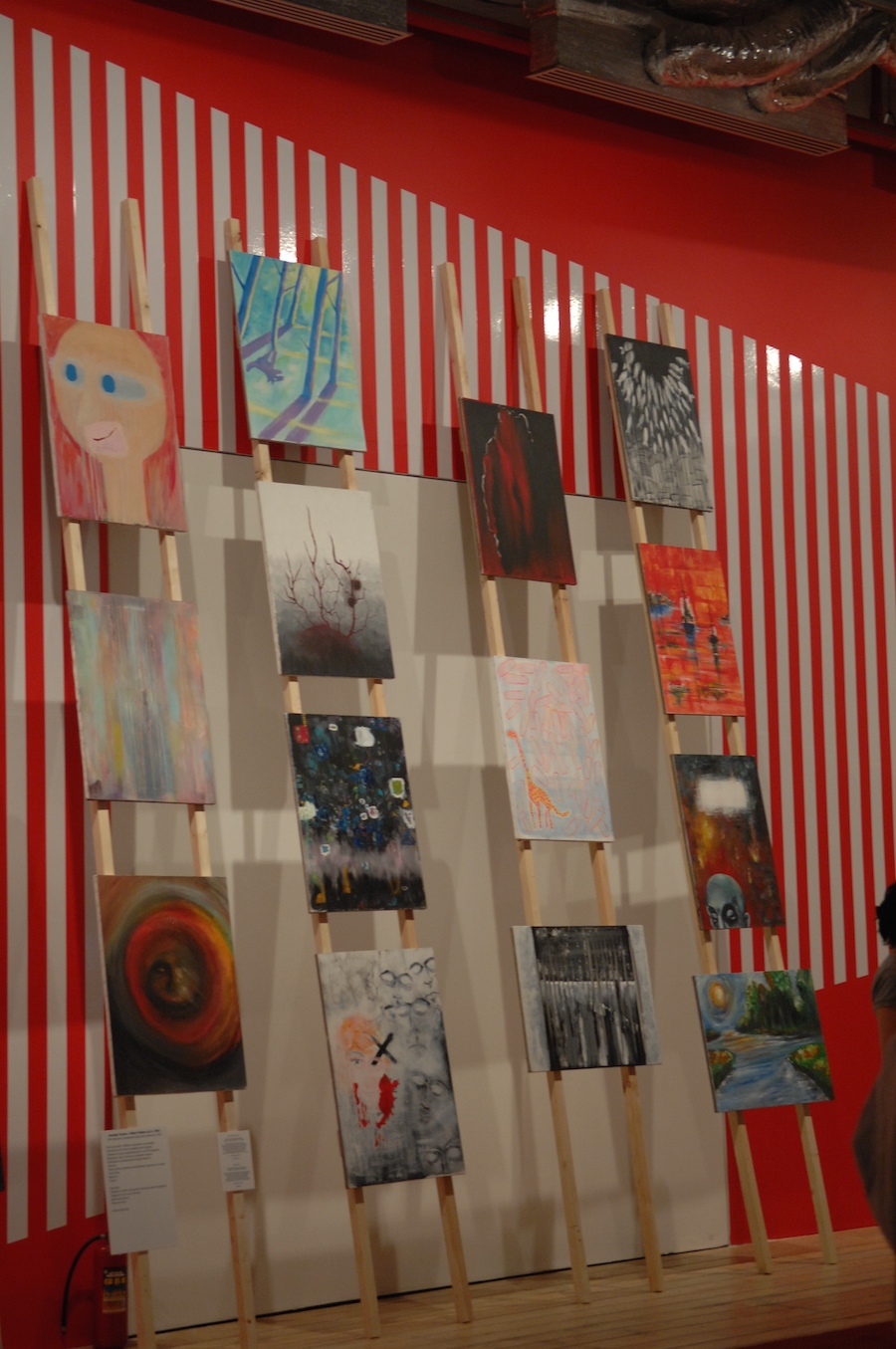
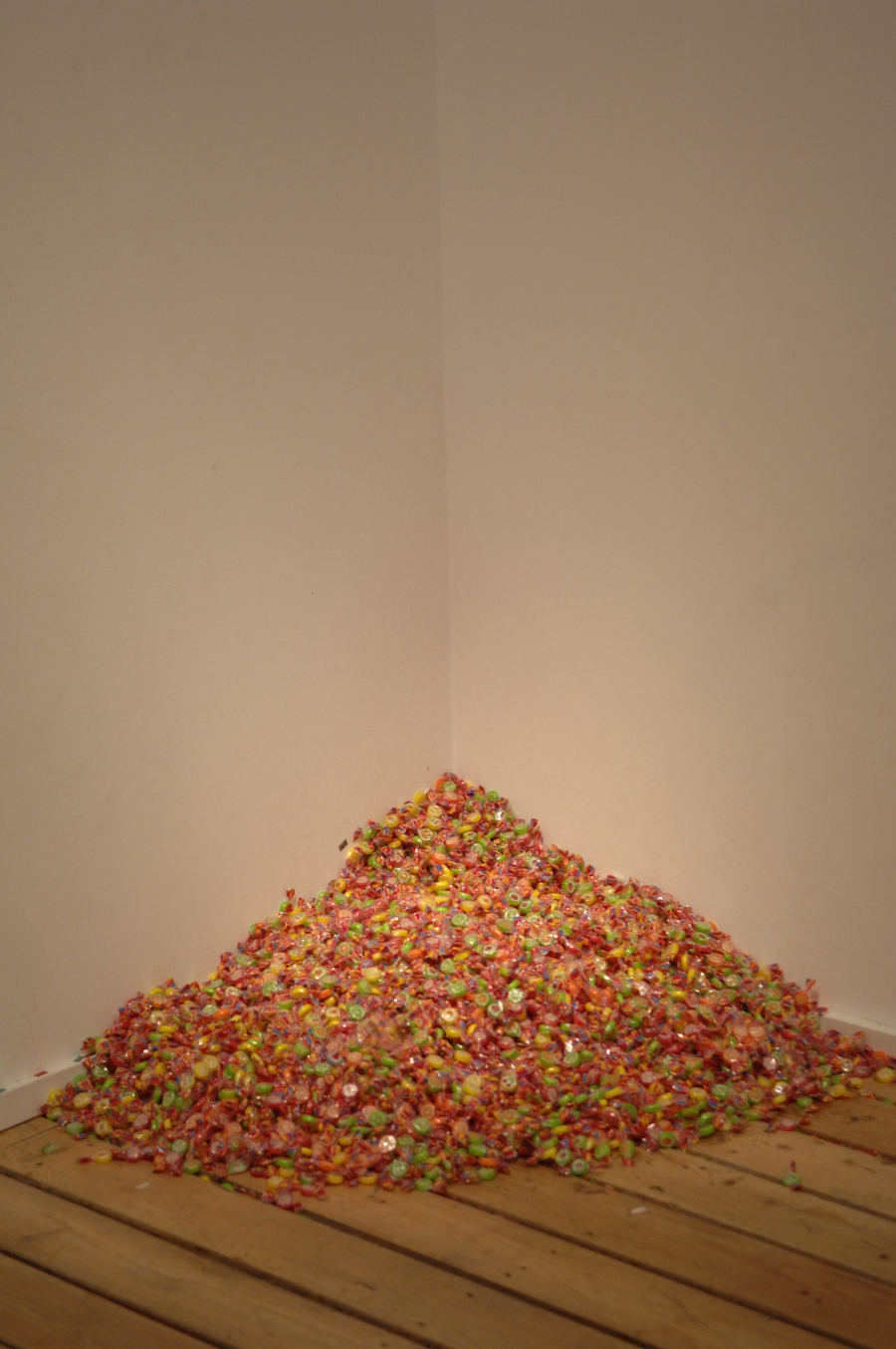
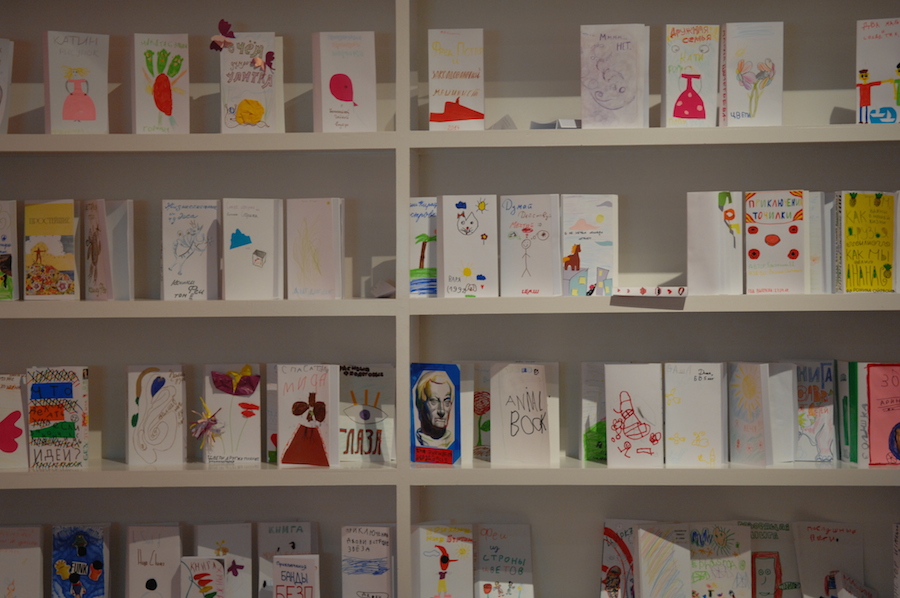
- Details
- Written by Maira Herrero
|
Contributed by: Maira Herrero, |
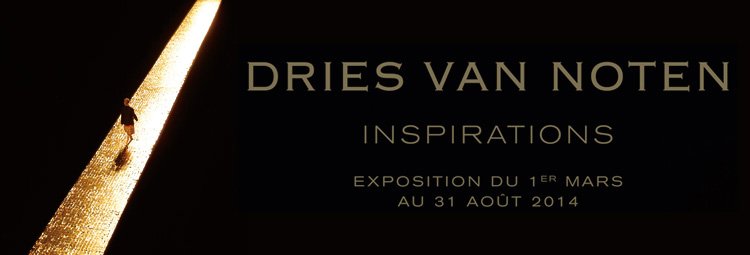
Is fashion art? “That’s the question of the century for our profession”.
That’s Dries Van Noten’s response to Pamela Golbin’s interview question. Golbin is the Head of Fashion and Fabrics at the Museum and curator of the exhibition, and the publication of the interview marks the opening of Inspirations at the Musée des Arts Décoratifs in Paris.
On display at the exhibition is the innovative body of work by Dries Van Noten: the way he treats and repurposes fabric, the richness of his embroidery and his daring and unorthodox combinations. His creative process reveals the disparate elements and influences from many different disciplines that inspired him in the creation of some truly timeless pieces. We never perceive direct associations between the source of inspiration and the end result, though — this is subtle inspiration, in the form of gestures, scents, colours, songs, paintings...
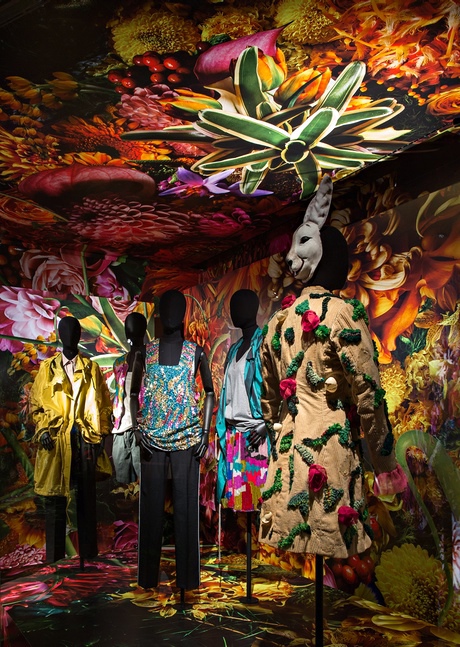
His idea of design has nothing to do with current trends — rather, he allows himself to be influenced by what the world around him as to offer, be it folkloric traditions from afar, or a certain film such as Jane Campion’s The Piano, Balenciaga’s wonderful costumes, or even David Bowie’s music. What we see here is a collection of everything that crossed his path and attracted his attention during the last three decades of his career.
The Belgian designer has collaborated with architect Jean-Dominique Secondi on this exhibition, the latter being responsible for the installation, the distribution of the pieces and the mise-en-scène of the many sources of inspiration, thereby attempting to define the role that fashion plays in culture. “Everything that I like is here, everything that has given me ideas, everything that forms the basis of each of my collections”. The installation itself is simply another part of his creative work.
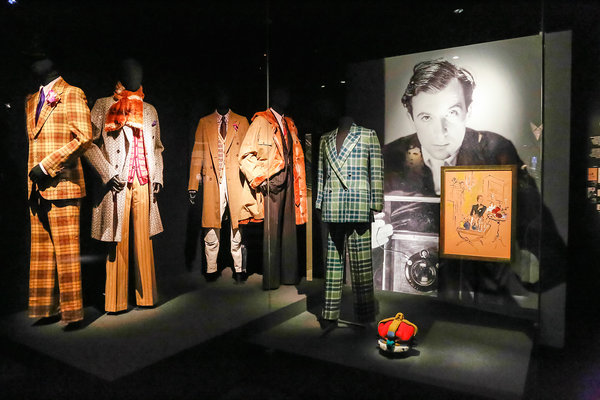
The mise-en-scène here is a real treat for lovers of visual spectacle. The space is filled with darkness punctuated by dramatic lighting — not only can we admire Van Noten’s designs but also all those images that have inspired him through the years — paintings, designs by other great fashion artists, photographs, film clips and of course the floral prints that have become a staple of his creative output.
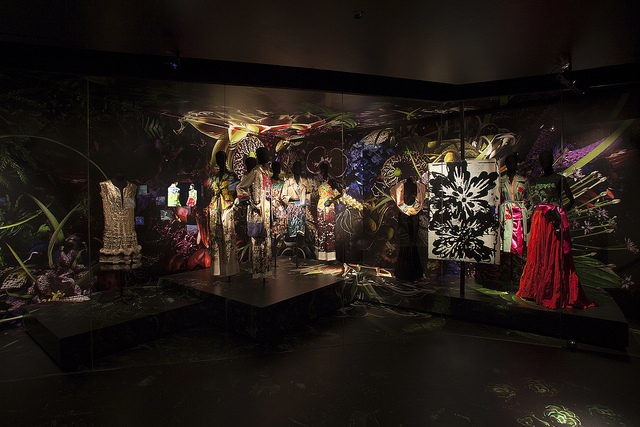
“This is the result of great team-work and is, in fact, an exercise in pure style” — Van Noten’s larger-than-life personality and innovative spirit are clearly on show here, in the Indian embroidery, the impossible dyes, the Italian and French printed fabrics, the patchwork montages and the sense of extravagance present in each beautifully—crafted piece.
Through this exhibition I think Van Noten is able to give an answer to the question of what value does fashion hold within the larger world of culture in the modern world, by revealing the intense creative process that exists behind each and every piece on display. Fashion is in fact a language, representing the designer, the consumer, the environment — it represents culture as a whole.
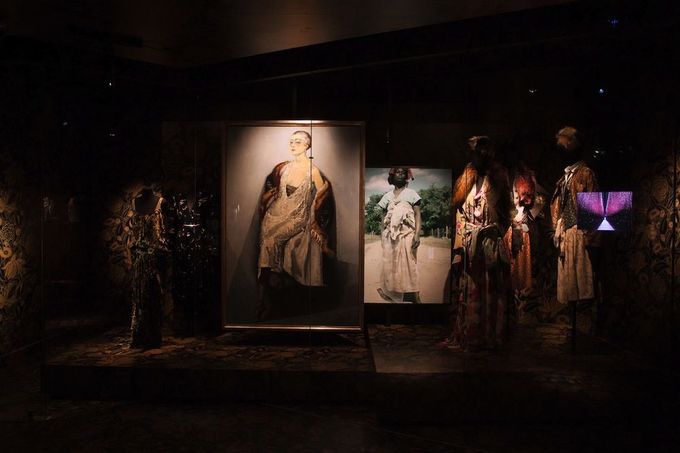
Dries Van Noten, born in Antwerp in 1958, graduated from his hometown’s Royal Academy of Fine Arts and presented his first collection in London in 1986 as part of the Antwerp Six group. He has being working tirelessly since then.
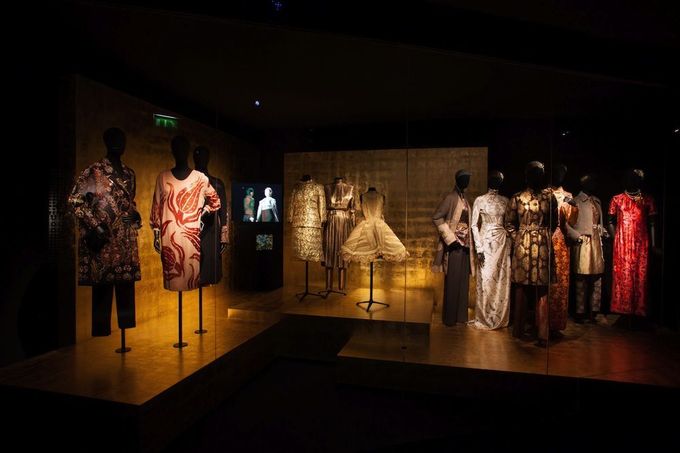
Until August 31, 2014 at the Musée des Arts Décoratifs, Paris
http://www.lesartsdecoratifs.fr/
http://i-d.vice.com/en_gb/watch/episode/1952/dries-van-noten-inspirations
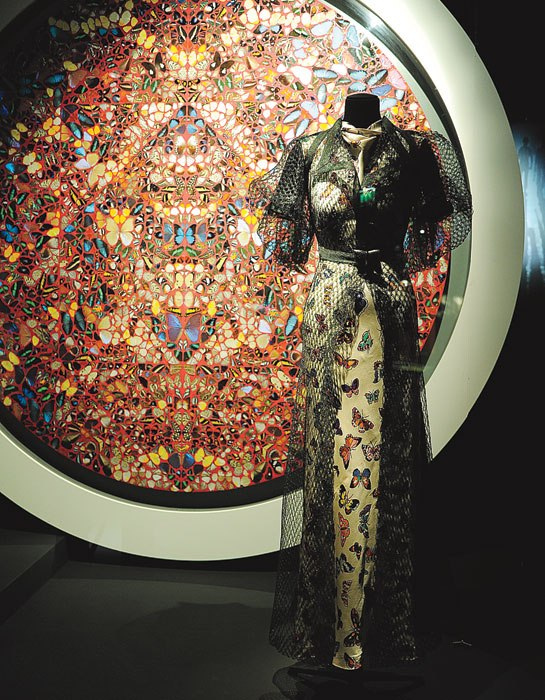
- Details
- Written by Matteo Mottin
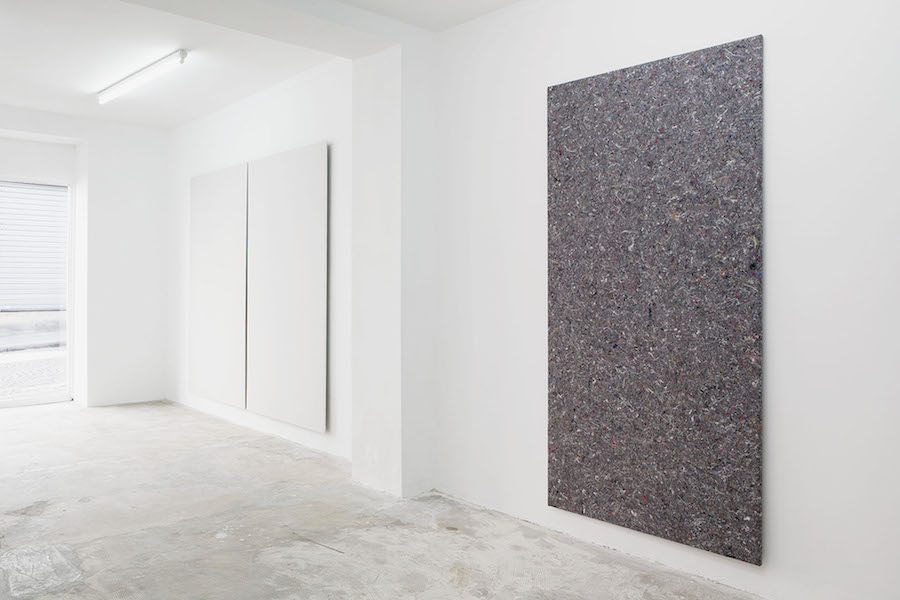
Yesterday, May 15th, inaugurated “Suites”, the new solo exhibition by Olve Sande at Antoine Levi gallery.
Matteo Mottin – in collaboration with ATPdiary – asked some questions to the artist.
ATP: I’d like to start from the title of the exhibition. “Suites” is a word that has different meanings in French and in English (I don’t actually know about Norwegian…). Could you tell me about it?
Olve Sande: The structural basis for this show is a continuation of a correspondence with the norwegian poet Jørn Sværen, where he sent me a series of short notes with the measurements of windows he had encountered in his daily life accompanied by a small text fragment. As a representation of a series of spatial situations, each work in the show is based on the interpretation of these notes. The dimension for the window for the room for the situation. The term suites suggests this set of rooms and the resulting amalgamation of different narratives and situations.
ATP: In “Outs”, your previous personal exhibition at Antoine Levi, you worked inside the gallery space in conjunction with its renovation, transferring the former space’s floor onto the walls of the gallery. Is there any link between “Outs” and “Suites”?
OS: Definitely. The works are in both cases created in the gallery space, and the final outcome of the show is a result of the interaction between a predefined concept, a given material, and the situation of production. It’s a process of reading and writing at the same time.
In this case, the given material was the notes i received from Jørn with the window measurements and its corresponding titles. For this show, the work in the gallery coincides with the process of reading and understanding the titles and relating to the scale of the works, like i had to relate to the given laminate floor of the last show. Working in the same space a second time, there is also the recollection of the previous show which also resonates with the current work and doubles the situation.
ATP: You studied both architecture and literature. In which ways this background has influenced your practice?
OS: At this point it´s a bit difficult see what comes from where. I think the most important implications of my background is that it gave me a quite good understanding what architecture and literature can and cannot be, and it made me realize that my interest was located somewhere in between the two. When i was studying architecture i was more concerned with its narrative potential, and studying literature made me want to explore the physical aspect of language. At some point i realized that art probably was a good place to start if I were to pursue what had started to interest me.
ATP: Could you tell me about the way you work? Do you start with a concept or is it more about experimenting with materials?
OS: As most of my works are produced in a site specific situation within a limited timeframe, it makes my working process quite compartmentalized. Before I begin a new project I try to create a certain distance to my own work so i can develop a conceptual framework without being too concerned with the practical implication of actual production. Between projects I spend most of my time reading whatever catches my interest, browsing through books in the library and taking notes until a new project starts to emerge. I then look into ways of investigating a particular idea, looking into potential manifestations of the project. As the actual production necessarily has to be based on a certain amount of improvisation, this usually implies developing a kind of working procedure so that i have a clear structural basis when I enter the gallery space to make the works. Informed by this new body of works, the show is then succeeded by a kind of retrospective process where I try to get an overview of its conceptual implications before I start looking into new material again.
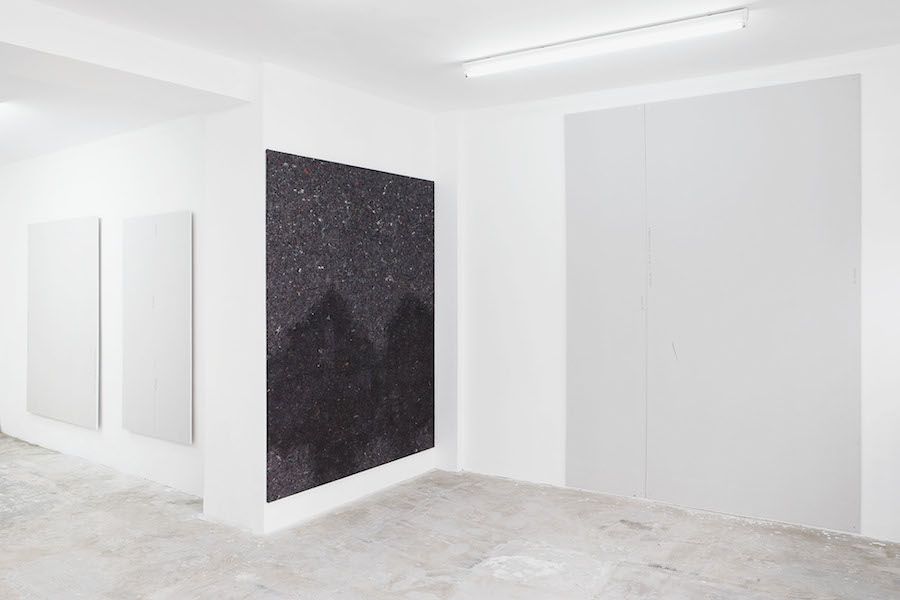
OLVE SANDE, SUITES, EXHIBITION VIEW, COURTESY THE ARTISTS AND GALERIE ANTOINE LEVI, PARIS; PHOTO: CLAIRE DORN
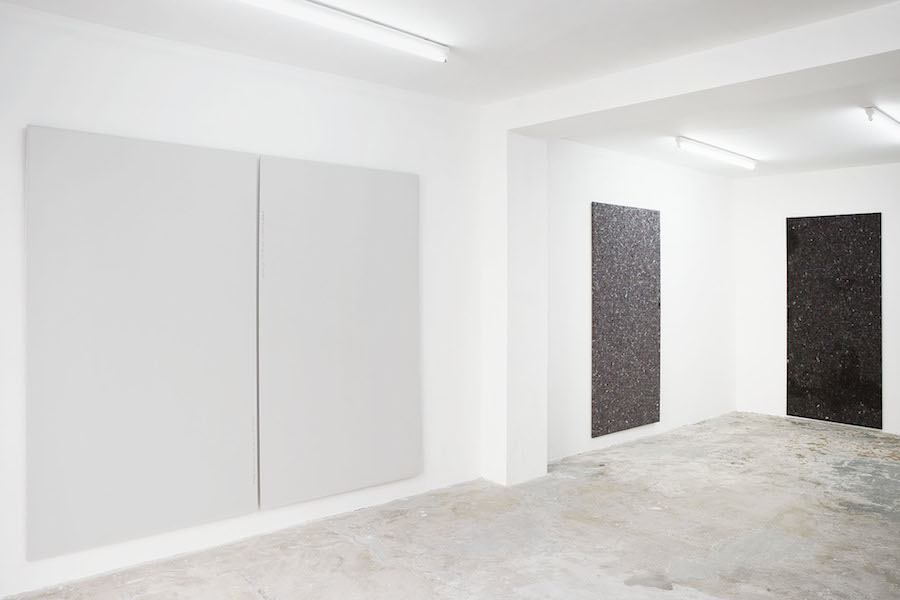
OLVE SANDE, SUITES, EXHIBITION VIEW, COURTESY THE ARTISTS AND GALERIE ANTOINE LEVI, PARIS; PHOTO: CLAIRE DORN
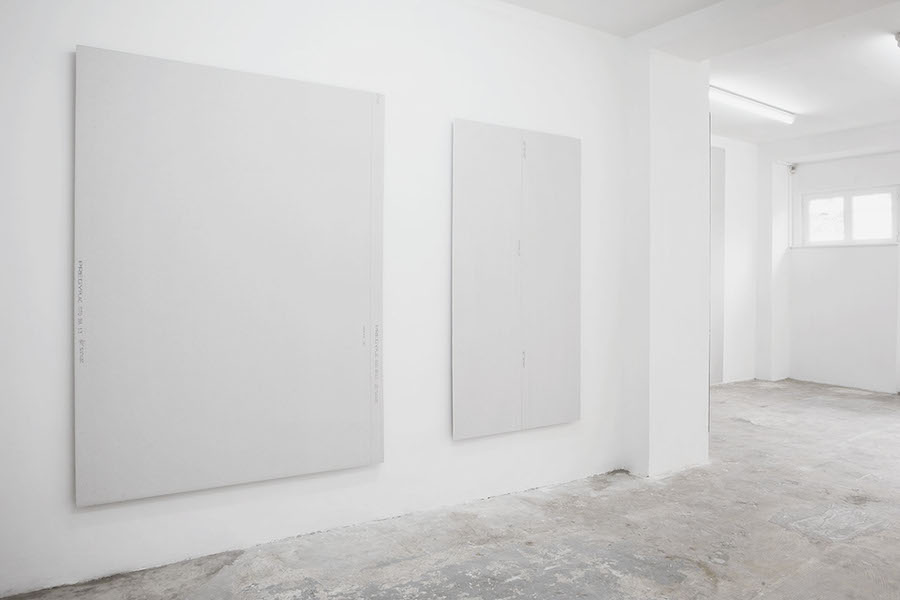
OLVE SANDE, SUITES, EXHIBITION VIEW, COURTESY THE ARTISTS AND GALERIE ANTOINE LEVI, PARIS; PHOTO: CLAIRE DORN
 |
Written by our friends at ATPdiary.com in colaboration with Matteo Mottin |
- Details
- Written by Maira Herrero
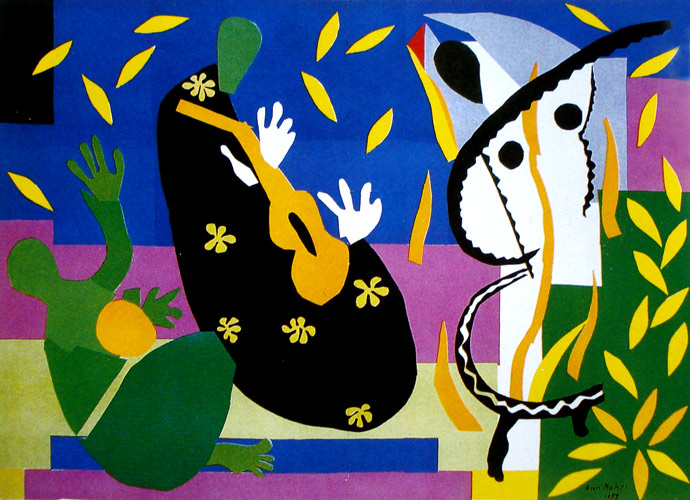
London’s Tate Modern is currently dedicating 14 rooms to the most idiosyncratic works of one of the 20th century’s French geniuses, Henri Matisse — his famous paper cut-outs.
In 1941 his health suffered a great blow and he became wheelchair-bound, but this did not stop his great creative spirit from expressing itself. He focused his creativity on a new language which he called, “painting with scissors” — he didn’t see this as stopping painting, rather a continuation of his creativity and art.
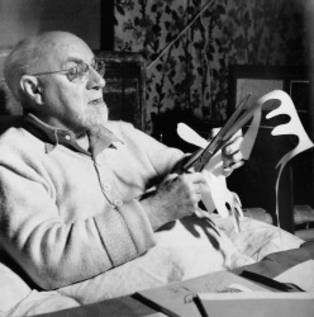
This new visual language consisted of pieces of cut-out paper painted in bright colours, at a time when Europe was being overshadowed by the Second World War. His assistants, led by Lydia Delectorskaya, would paint sheets of paper with brightly coloured gouache and, following the artist’s orders, would hang them on the walls of his studio and bedroom.
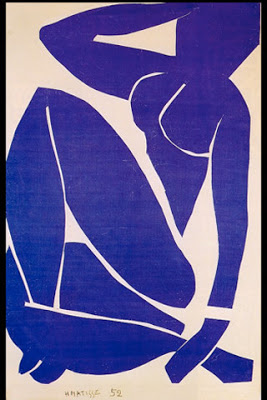

Matisse spent long hours reflecting on the different possible combinations before setting out with the scissors. He executed numerous sketches and studied different points of view before deciding on a final composition for his collages.
The exhibition includes a number of films that help us get closer to Matisse’s creative process. We see how, with strong, sure hands, he cuts away at the paper to create improvised shapes, impossible to define, and how he indicates to Lydia Delectoskaya where they should be placed.
In the cut-outs themselves we can recognize the images that have always been a constant in his art: dynamic dancing scenes (Shostakovich’s Symphony No. 1), seascapes full of fish, corals and leaves (representing his memories of his travels to Tahiti), the blue nudes series, the Moorish mosaics…
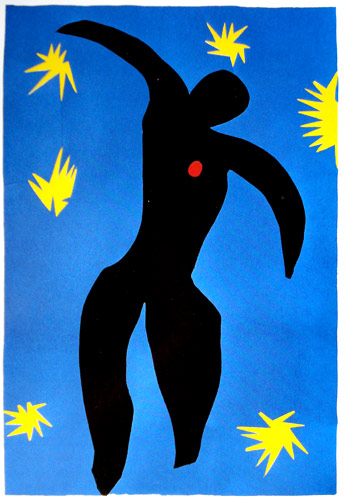
The Jazz Book is one of the key pieces of the exhibition, containing 20 sheets of cut-out paper with circus motifs and texts written by Matisse himself. The book is considered one of his most innovative works.
In 1947 he decorated the Rosary chapel in Vence, the work which perhaps more than any other describes his simplifying tendency towards flatter forms. Matisse placed great emphasis in this work, which took him over four years of labour across many different aspects of the church: the composition of the building’s windows, the design of the priest’s liturgical robes, the walls’ murals, the design and structure of the altar, etc. The artist was very pleased with his output, and was known to have called it “the result of all my active life”.
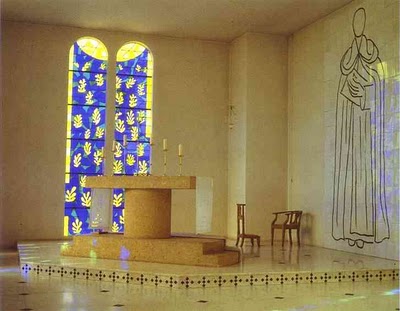
The last rooms of the exhibition are dedicated to larger works, made just before his death in the beginning years of the 50s: Le Perruche et la Sirène, The Snail, Memory of Oceania and Large Decoration with Masks, all of which are in fact displayed together for the first time in London since their creation in 1953.
The exhibition manages to transmit to the visitor all the vitality of the artist and his work — as Benjamin would say, the aura is present here.
Congratulations to Nicholas Serota, director of the Tate Modern, and to all his team!
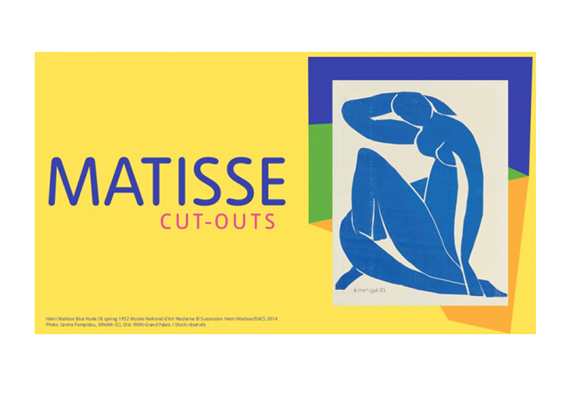
Henri Matisse. The cut-outs. Tate Modern, Londres. Until September 7, 2014.
- Details
- Written by Maira Herrero
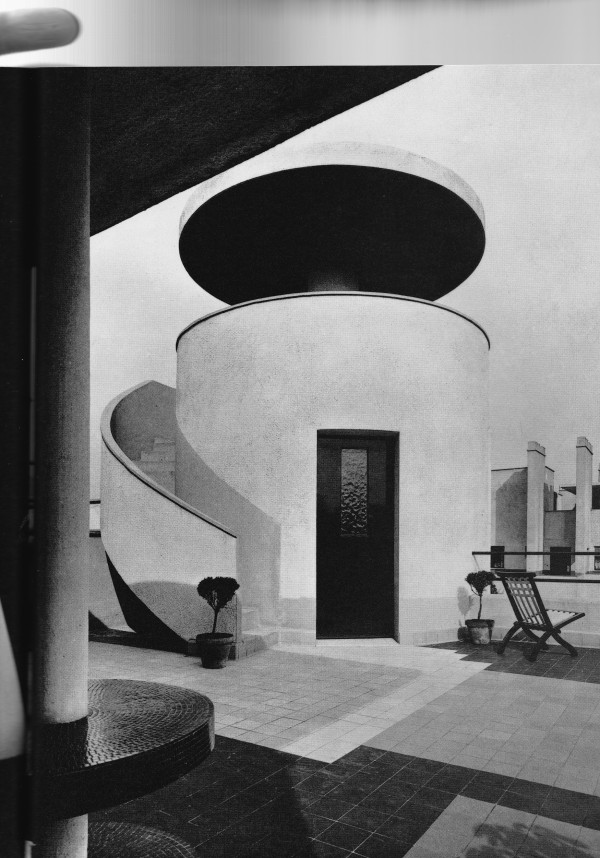
The Parisian Robert Mallet Stevens (1886-1945), who together with Le Corbusier was one of the most influential architects of the French modern movement, was the designer of this architectural marvel, built in 1927. In 1929 he founded the Union des Artistes Modernes to unite the Parisian avant-garde artists of the first half of the 20th century — Jean Prouvé, Le Corbusier, Charlotte Perriand…
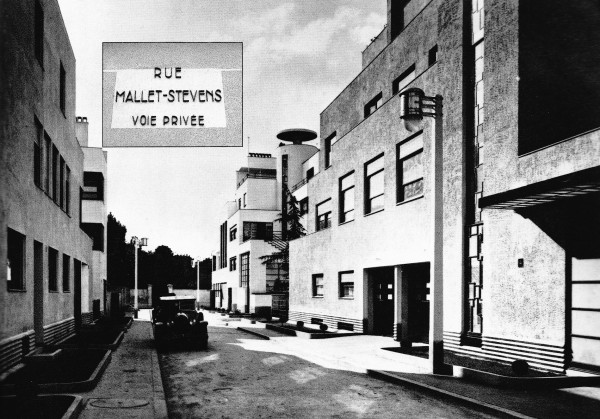
The house is part of a small urbanization designed by Mallet Stevens. On top of the cylindrical hollow staircase, there are a number of different spaces which form the complex design that the owners commissioned. Geometric forms merge seamlessly, creating a harmonious whole. Rue Mallet-Stevens nº 10, 75016 Paris.
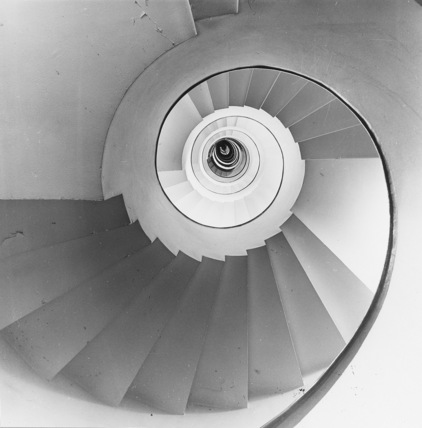
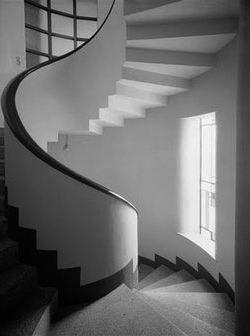
Thanks to gallery-owner Eric Touchaleaume (Gallerie 54), today we can see the concrete light source built by Mallet Stevens for his casino La Pérgola de Saint-Jean-de-Luz: yet another example of how this architect extends his work to sculpture and design.
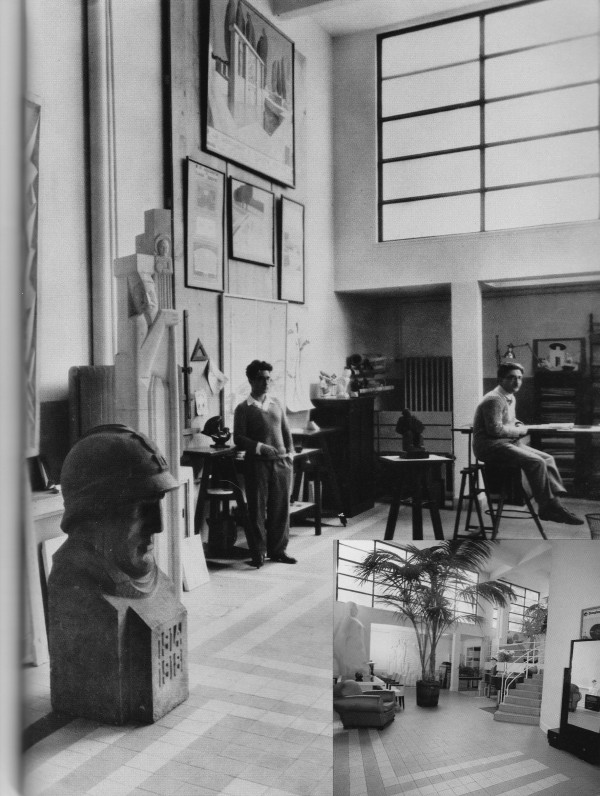
www.admagazine.fr/architecture
www.connaissancedesarts.com
- Details
- Written by Maira Herrero
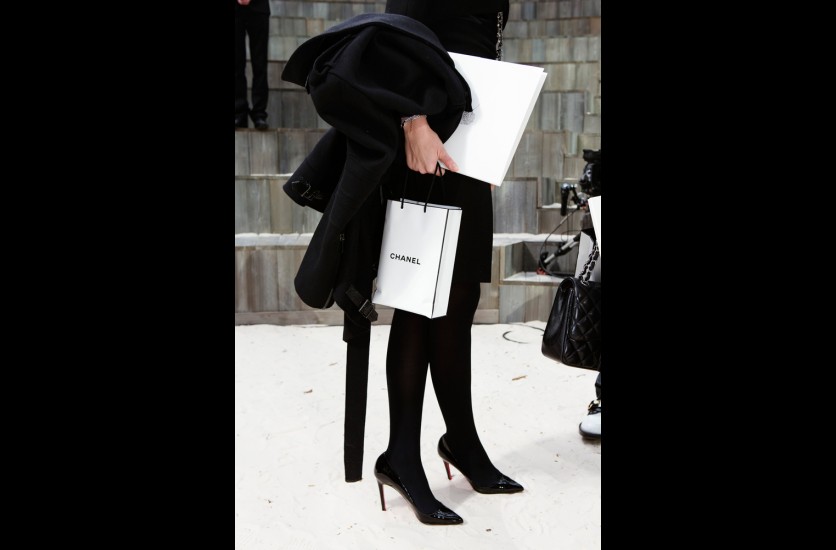
We're so obsessed with taking photographs that we forget to live the experience
This is an unmissable opportunity to see 62-year-old British photographer Martin Parr’s current work. Parr’s focus has been on mass tourism, a theme he studies critically but not without humour. In this exhibition, La Maison de la Photographie Européenne has given the artist carte blanche to offer his own personal vision of the city of Paris, with its people, its many streets filled with tourists, its museums, restaurants, fairs, its fashion and anything that might have caught his eye as photographer and foreigner. Read more.
Martin Parr's Parisian world consists of around 60 current pieces and some older ones as well: this is an excellent opportunity to reflect on tourists' irrational hunger to immortalize everything they see, without looking beyond that which lies in front of them, without even feeling what they're experiencing.
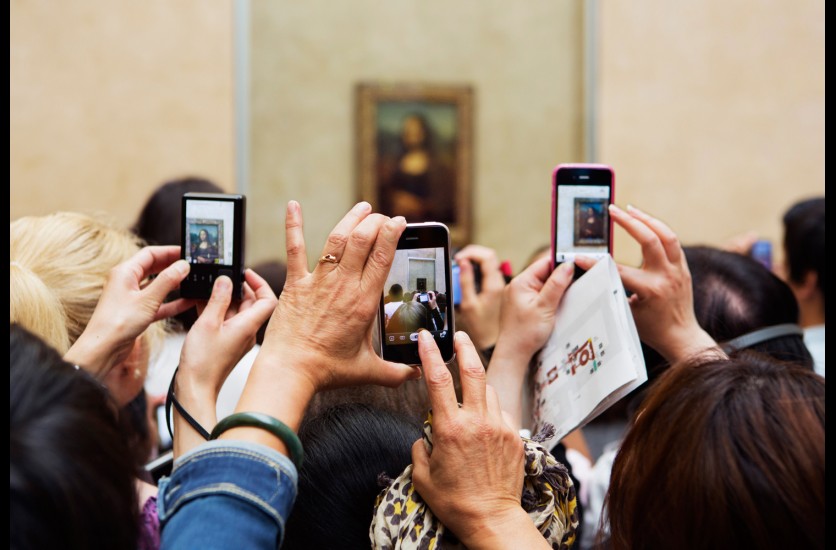
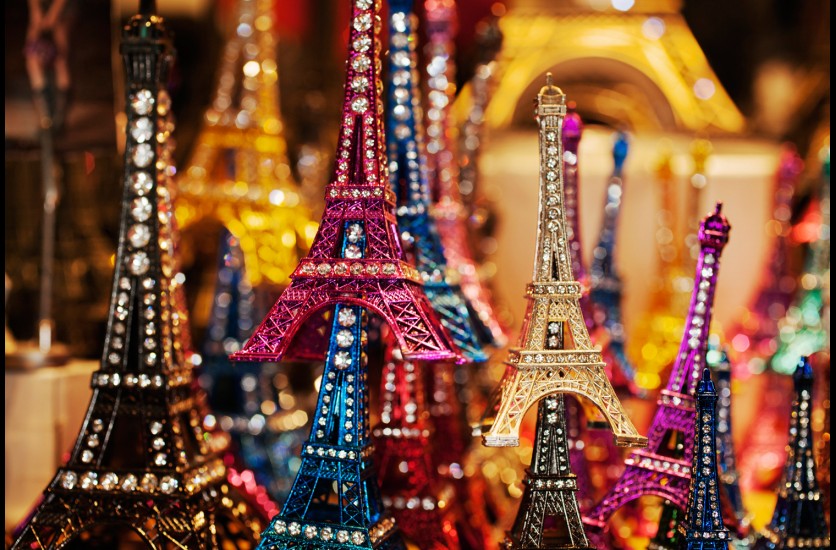
www.martinparr.com
- Details
- Written by Maira Herrero
Bill Viola, New York’s greatest video-artist, is currently displaying his work in the Gran Palais. The exhibition is in fact a retrospective, containing works from the 70s to the present day.
Viola’s works have always centered around the general concept of Life — natural phenomena such as fire, wind, water and death are some of the specific themes that come up time and again. His search for a natural order in the world, by means of simple, subtle harmony, is evident to those viewers who invest time in his work, which invites us to escape our day-to-day lives and appreciate the natural principles that sustain existence, the way the Ancient Greeks understood it. Life seen as continuous movement and change (“Life is like a flowing river”). Through his work, Viola wants us to stop and think about who we are, our surroundings, where we’re heading and whether or not we’re actually perceiving the world around us.
Viola challenges the viewer with 20 works projected onto more than 30 screens, ranging from overlapping canvases to a large-format polyptych and each with its accompanying soundtrack filling the room.
Some of the works refer to the great masters of painting — in Going Forth by Day (2002) we see the fresco from Giotto’s Saint Francis chapel; in The Quintet of the Astonished (2000) there is a reference to El Bosco, and The Sleep of Reason (1988) includes a Goya.
The installation is incredible — the different elements of the exhibition, from the distribution of the videos in each room, the lighting, the spaces, the sounds, all work together in harmony to effectively surround the visitors in the sensorial world of Viola’s art. Unmissable!


Grand Palais www.grandpalais.fr

